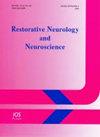继发于眼缺血综合征的血管性视网膜事件,QIAPI改善1例报告
IF 1.6
4区 医学
Q4 NEUROSCIENCES
引用次数: 0
摘要
眼缺血综合征(OIS)是一种罕见的疾病,是由于颈总动脉或颈内动脉狭窄或闭塞而引起的眼部灌注不足。动脉粥样硬化是颈动脉改变的主要原因。由于OIS与动脉粥样硬化相关,患者通常有其他相关合并症。73%的患者有高血压,56%的患者有糖尿病。第一例OIS是由Hedges于1963年报道的,是一例内颈动脉(ICA)完全闭塞的患者视网膜出血和静脉扩张。唯一的治疗方法是治疗新血管并发症。最近的研究表明,OIS与脑血管、眼部和全身疾病的显著风险相关。OIS的视力预后较差。临床医生必须了解颈动脉疾病的体征和症状,以便及时诊断和适当转诊,因为OIS可能是严重缺血性脑血管和缺血性心脏病的表现。OIS患者5年死亡率高达40%。大多数死亡是由心脏病引起的OIS的管理争议源于这样一个事实,即文献中报道的大多数患者都是小型回顾性系列或病例报告的一部分。此外,该疾病的生理致病机理尚不确定。泛视网膜光凝(PRP)是公认的治疗视网膜缺血易发新生血管的方法,因为视网膜缺血可能引发血管生成生长因子的产生。然而,引起血管生成异常的主要刺激因素是缺氧,而不是缺血,而相反的最佳抗血管生成因子是组织中高水平的氧。因此,我们对人体几种有机分子的意想不到的能力的发现,可以从细胞内的水中吸收氧气,就像在植物中一样,为治疗这些困难的病例开辟了一条新的途径,改善了预后。本文章由计算机程序翻译,如有差异,请以英文原文为准。
Vascular Retinal Event Secondary to Ocular Ischemic Syndrome, Improved With QIAPI 1: Case Report
Ocular ischemic syndrome (OIS) is a rare condition, which is caused by ocular hypoperfusion due to stenosis or occlusion of the common or internal carotid arteries. Atherosclerosis is the major cause of changes in the carotid arteries. Since OIS is associated with atherosclerosis, patients usually have other related co-morbidities. Hypertension is found in 73% of the patients and diabetes mellitus in 56%. The first case of OIS was reported in 1963 by Hedges as a case with retinal hemorrhages and venous dilatation in a patient with complete occlusion of the internal carotid artery (ICA). The only therapy is to treat the neovascular complications. Recent studies suggest that OIS is associated with a significant risk of cerebrovascular, ocular, and systemic morbidity. OIS has a poor visual prognosis. It is imperative that the clinician be aware of the signs and symptoms of carotid disease to facilitate prompt diagnosis and appropriate referral, because OIS may be the presenting sign of serious ischemic cerebrovascular and ischemic heart disease. The 5-year mortality rate in OIS patients is as high as 40%. Most deaths are due to cardiac disease Controversy in the management of OIS arises from the fact that most patients reported in the literature are part of small retrospective series or case reports. Besides the uncertainty about the physio-pathogenic of the disease. Pan-retinal photocoagulation (PRP) is the accepted treatment for retinal ischemia predisposing to neovascularization due to retinal ischemia supposedly triggers the production of angiogenic growth factors. However, the main stimulus to abnormal angiogenesis is hypoxia more than ischemia, and opposite the best antiangiogenic factor is high levels of oxygen in tissues. Thereby, our discovery about the unexpected capacity of several organic molecules of the human body that can take the oxygen from intracellular water, like in plants, open a new way to treat these difficult cases, improving the prognosis.
求助全文
通过发布文献求助,成功后即可免费获取论文全文。
去求助
来源期刊
CiteScore
5.40
自引率
3.60%
发文量
22
审稿时长
>12 weeks
期刊介绍:
This interdisciplinary journal publishes papers relating to the plasticity and response of the nervous system to accidental or experimental injuries and their interventions, transplantation, neurodegenerative disorders and experimental strategies to improve regeneration or functional recovery and rehabilitation. Experimental and clinical research papers adopting fresh conceptual approaches are encouraged. The overriding criteria for publication are novelty, significant experimental or clinical relevance and interest to a multidisciplinary audience. Experiments on un-anesthetized animals should conform with the standards for the use of laboratory animals as established by the Institute of Laboratory Animal Resources, US National Academy of Sciences. Experiments in which paralytic agents are used must be justified. Patient identity should be concealed. All manuscripts are sent out for blind peer review to editorial board members or outside reviewers. Restorative Neurology and Neuroscience is a member of Neuroscience Peer Review Consortium.

 求助内容:
求助内容: 应助结果提醒方式:
应助结果提醒方式:


